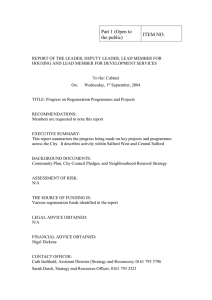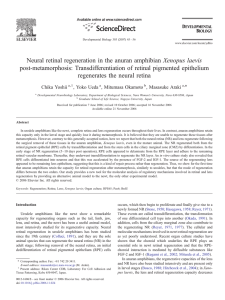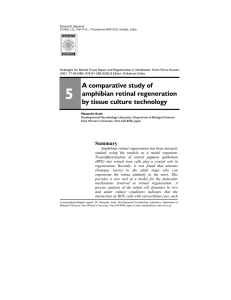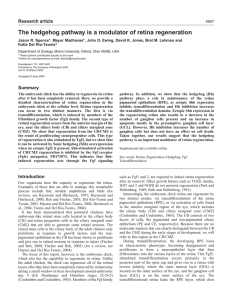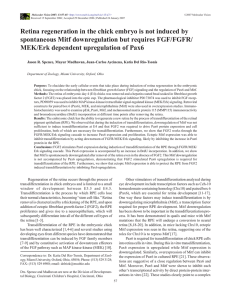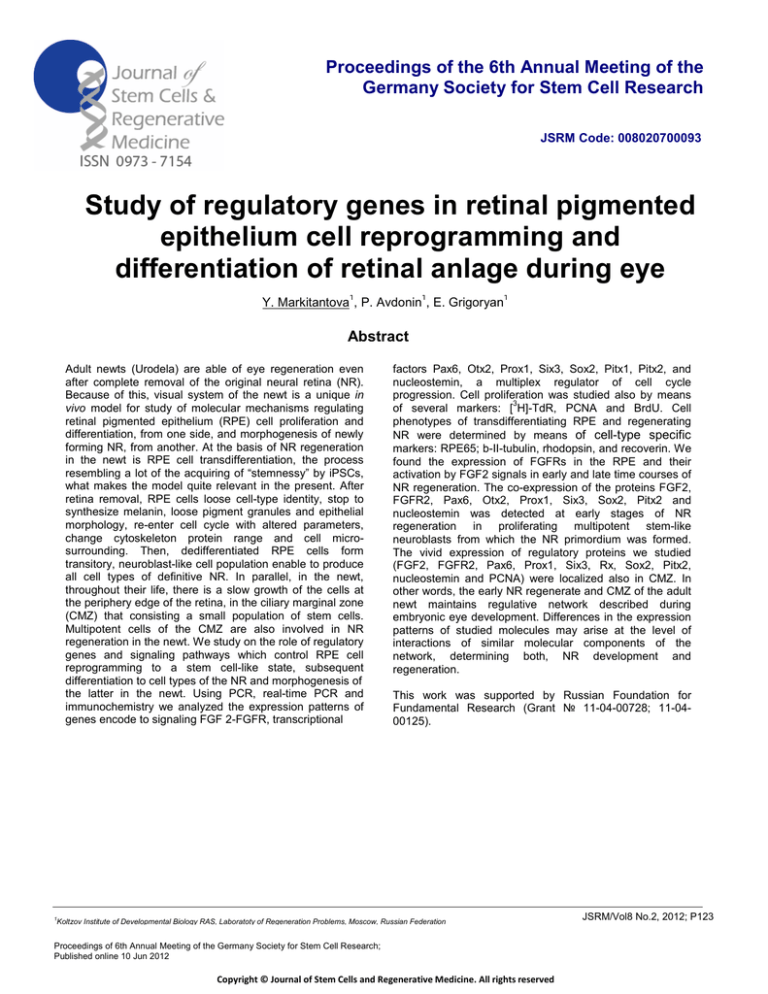
Proceedings of the 6th Annual Meeting of the
Germany Society for Stem Cell Research
JSRM Code: 008020700093
Study of regulatory genes in retinal pigmented
epithelium cell reprogramming and
differentiation of retinal anlage during eye
Y. Markitantova , P. Avdonin
Grigoryan
regeneration
in, E.the
newt
1
1
1
Abstract
Adult newts (Urodela) are able of eye regeneration even
after complete removal of the original neural retina (NR).
Because of this, visual system of the newt is a unique in
vivo model for study of molecular mechanisms regulating
retinal pigmented epithelium (RPE) cell proliferation and
differentiation, from one side, and morphogenesis of newly
forming NR, from another. At the basis of NR regeneration
in the newt is RPE cell transdifferentiation, the process
resembling a lot of the acquiring of “stemnessy” by iPSCs,
what makes the model quite relevant in the present. After
retina removal, RPE cells loose cell-type identity, stop to
synthesize melanin, loose pigment granules and epithelial
morphology, re-enter cell cycle with altered parameters,
change cytoskeleton protein range and cell microsurrounding. Then, dedifferentiated RPE cells form
transitory, neuroblast-like cell population enable to produce
all cell types of definitive NR. In parallel, in the newt,
throughout their life, there is a slow growth of the cells at
the periphery edge of the retina, in the ciliary marginal zone
(CMZ) that consisting a small population of stem cells.
Multipotent cells of the CMZ are also involved in NR
regeneration in the newt. We study on the role of regulatory
genes and signaling pathways which control RPE cell
reprogramming to a stem cell-like state, subsequent
differentiation to cell types of the NR and morphogenesis of
the latter in the newt. Using PCR, real-time PCR and
immunochemistry we analyzed the expression patterns of
genes encode to signaling FGF 2-FGFR, transcriptional
factors Pax6, Otx2, Prox1, Six3, Sox2, Pitx1, Pitx2, and
nucleostemin, a multiplex regulator of cell cycle
progression. Cell proliferation was studied also by means
3
of several markers: [ H]-TdR, PCNA and BrdU. Cell
phenotypes of transdifferentiating RPE and regenerating
NR were determined by means of cell-type specific
markers: RPE65; b-II-tubulin, rhodopsin, and recoverin. We
found the expression of FGFRs in the RPE and their
activation by FGF2 signals in early and late time courses of
NR regeneration. The co-expression of the proteins FGF2,
FGFR2, Pax6, Otx2, Prox1, Six3, Sox2, Pitx2 and
nucleostemin was detected at early stages of NR
regeneration in proliferating multipotent stem-like
neuroblasts from which the NR primordium was formed.
The vivid expression of regulatory proteins we studied
(FGF2, FGFR2, Pax6, Prox1, Six3, Rx, Sox2, Pitx2,
nucleostemin and PCNA) were localized also in CMZ. In
other words, the early NR regenerate and CMZ of the adult
newt maintains regulative network described during
embryonic eye development. Differences in the expression
patterns of studied molecules may arise at the level of
interactions of similar molecular components of the
network, determining both, NR development and
regeneration.
This work was supported by Russian Foundation for
Fundamental Research (Grant № 11-04-00728; 11-0400125).
1
Koltzov Institute of Developmental Biology RAS, Laboratoty of Regeneration Problems, Moscow, Russian Federation
Proceedings of 6th Annual Meeting of the Germany Society for Stem Cell Research;
Published online 10 Jun 2012
Copyright © Journal of Stem Cells and Regenerative Medicine. All rights reserved
JSRM/Vol8 No.2, 2012; P123



